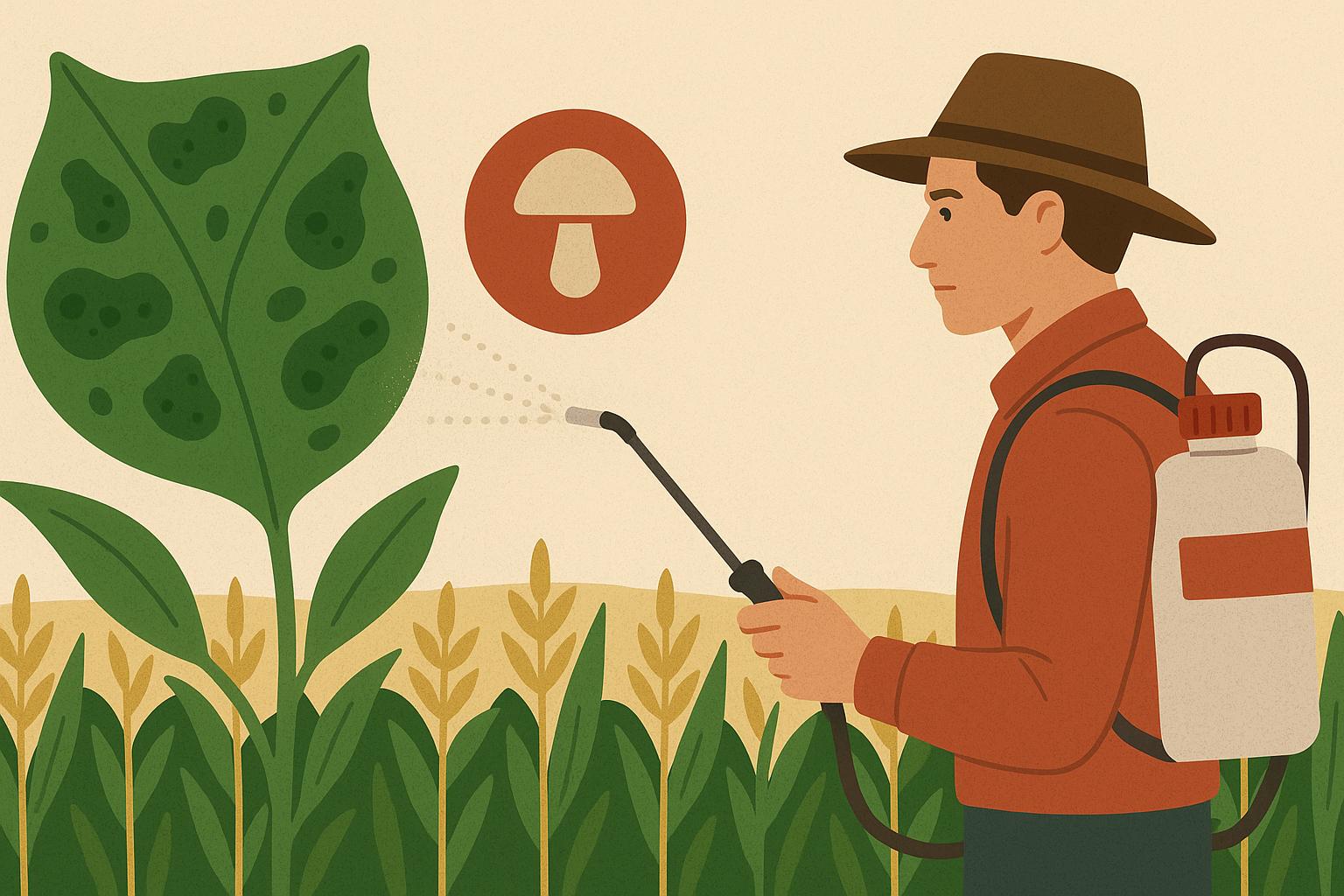other

May 20,2025 • 5 min read
How Indian Farmers Are Winning the Battle Against Crop Pests

Pests have long been a formidable enemy of Indian agriculture, reducing yields, affecting crop quality, and increasing financial pressure on farmers. From fall armyworms attacking maize to whiteflies infesting cotton fields, pests can rapidly destroy months of effort and investment. Yet, a quiet revolution is taking place across India’s fields. Farmers are adopting more innovative, affordable, and sustainable pest control techniques, mixing traditional wisdom with modern tools.
This blog explores how Indian farmers increasingly turn the tide in their fight against crop pests by embracing integrated pest management, technology, and timely interventions.
Smart Strategies That Help Farmers Win Against Pests
What’s driving success is not just technology, but a shift in mindset. Farmers are no longer relying solely on reactive chemical sprays. They are embracing monitoring, diversity, and targeted application.
1. Early Detection and Field Scouting
Many progressive farmers have become habitual field scouts. Early-stage detection allows for timely intervention when pest populations are still manageable.
-
Yellow sticky traps are used to catch whiteflies and aphids.
-
Light traps help track night-flying moths like armyworms and bollworms.
Krishi Vigyan Kendras (KVKs) have held village-level training camps that have helped farmers recognise pest eggs, larval stages, and damage symptoms more accurately. Monitoring tools now complement this traditional scouting.
2. Use of Resistant Varieties
Seed companies and agricultural universities have developed pest-tolerant hybrids that are now widely available. For instance, Bt cotton varieties reduce bollworm damage by 80%, while improved maize lines more effectively resist stem borers and caterpillars.
These seeds cost slightly more, but they reduce the need for multiple chemical applications, leading to long-term savings and reduced soil impact.
3. Affordable Pesticides and Safer Alternatives
The Indian pesticide market is full of generic products that are effective yet affordable. These include neem-based insecticides, pyrethroids, and contact-based synthetic sprays. Many of these work best when used in rotation to avoid resistance.
A well-structured crop protection plan includes products based on crop stage, pest lifecycle, and economic threshold levels. Smallholder farmers often buy insecticide products online that match their local needs and can be delivered quickly to avoid delays during critical pest windows.
Some farmers also use:
-
Neem seed kernel extract (NSKE) as a contact repellent
-
Biological sprays containing Bacillus thuringiensis (Bt) for caterpillar control
Using these products responsibly ensures effective pest control without harming pollinators or beneficial insects.
Technology Tools That Empower Farmers Against Pests
Digital agriculture is playing a growing role in early warning and advisory systems.
Mobile Apps and Pest Detection Tools
Apps like Plantix, AgriCentral, and Cropin use AI and machine learning to identify pest symptoms from uploaded images. These apps provide:
-
Pesticide recommendations with correct dosages
-
Region-specific pest outbreak alerts
-
Weather-linked spray timings
Drone and Sensor-Based Spraying
In states like Punjab and Maharashtra, drone spraying is being tested in sugarcane, cotton, and paddy fields. These systems:
-
Reduce human exposure to chemicals
-
Cover large fields quickly and precisely
-
Use less water and pesticide volume
Government schemes now subsidize drone spraying services, making them accessible to smallholder groups and farmer cooperatives.
"Every leaf tells a story technology just helps farmers read it faster and more clearly."
Farmer Innovation and Local Adaptation
While technology helps, the real strength lies in field-level creativity. Indian farmers use local resources, indigenous knowledge, and cost-effective tools to prevent pest escalation.
Examples include:
-
Intercropping marigolds with vegetables to repel nematodes and whiteflies
-
Spraying fermented buttermilk and jaggery mix to attract and trap sucking pests
-
Using garlic-chili-ginger decoctions as a homemade botanical spray
These localised practices are often shared in farmer WhatsApp groups, YouTube channels, and radio shows. Platforms like AgriFarming regularly publish farmer-tested pest control tips tailored to Indian conditions.
Community-Based Pest Surveillance and Response
Individual efforts are often insufficient in pest-prone areas. Community-level monitoring and action plans prevent the spread of pests from one field to another.
Successful community models include:
-
Joint scouting by village youth groups
-
Coordinated spray schedules to manage large-scale infestations
-
Shared rental services for sprayers and safety equipment
Local extension workers help coordinate these initiatives by mapping pest pressure using basic tools or government mobile apps.
Government Initiatives Supporting Pest Management
India’s Ministry of Agriculture runs programs that directly or indirectly support farmers’ pest control efforts.
-
National IPM Program: Provides training and demonstration on pest-safe practices.
-
Subsidy Schemes: Offer discounts on biopesticides and sprayers under PM-KISAN and RKVY programs.
-
ICAR-KVK Outreach: Conducts pest surveillance and alert campaigns during critical seasons.
Agri-input portals and eNAM (National Agriculture Market) platforms also feature educational content to guide farmers in using pesticides safely and in a timely manner.
FAQs on Pest Control Practices in Indian Farming
-
How often should pest monitoring be done?
Ideally, 2–3 times a week during peak pest seasons. Frequent scouting allows timely intervention and reduces chemical usage. -
Are bio-insecticides effective against serious infestations?
They work well in early stages or when pest levels are low. They can be used in rotation with chemical options for balanced control in severe cases. -
Can I mix insecticides to save time?
Only if the label allows it, incompatible mixing can cause phytotoxicity and reduce effectiveness. -
What’s the best time to spray insecticides?
Early morning or late evening when temperatures are cooler and pollinators are inactive. Avoid spraying during rain or wind. -
How do I avoid pesticide resistance?
Rotate between active ingredients from different chemical classes. Avoid repeated use of the same molecule across crops.
anjalirao Details
User Profile
- Full name
- anjalirao
- Email address
- anjalirao201616@gmail.com
- Join Date
- 2025-05-20
- State
- City
- Pincode
- Address
- Follow us on Facebook
- Follow us on Twitter
- Website Name
- Bio